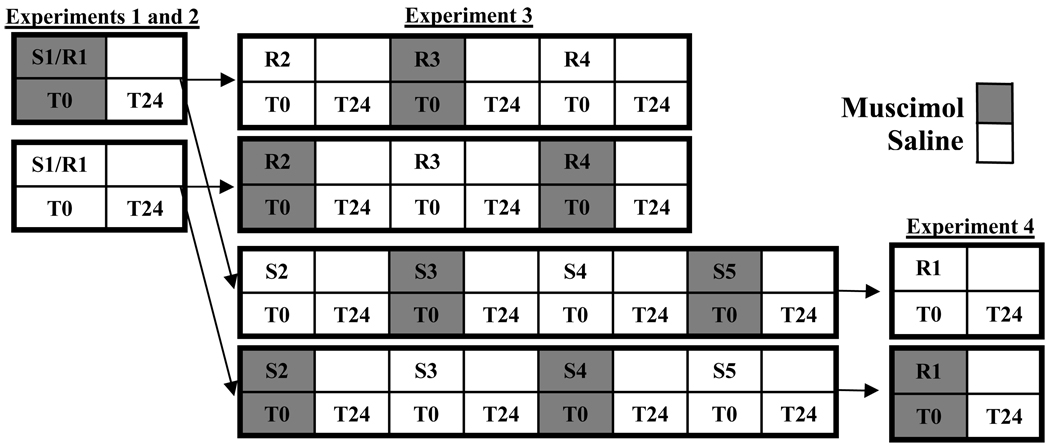Figure 2.
Experimental Design. Initial training was identical for all animals with the exception of cannula placement into either PL-IL or OFC and the balanced assignment of initial tasks. All animals were infused with either muscimol (gray boxes) or saline vehicle (white boxes) on each switch or reversal. The top and bottom rows for each experiment indicate two groups: one that received muscimol on the first switch/reversal and the other that received vehicle. Arrows indicate when animals in one experiment were used in subsequent experiments. After the first switch/reversal, muscimol and saline infusions alternated across multiple switches and reversals for each animal. Experiment 1 tested animals on a single spatial reversal. Experiment 2 tested animals on a single strategy switch. Experiment 3 tested the persistence of OFC deficits in reversal by performing 3 additional spatial reversals with the OFC-implanted animals from Experiment 2. Experiment 4 tested performance over 4 or 5 additional switches with the OFC implanted animals from Experiment 2. The switches were followed by a single spatial reversal. Trials to criterion and Errors at t=0 hrs were measured on the first day of testing (T0), and Errors at t=24 hrs was measured on the following day of testing (T24) for all switches and reversals.

